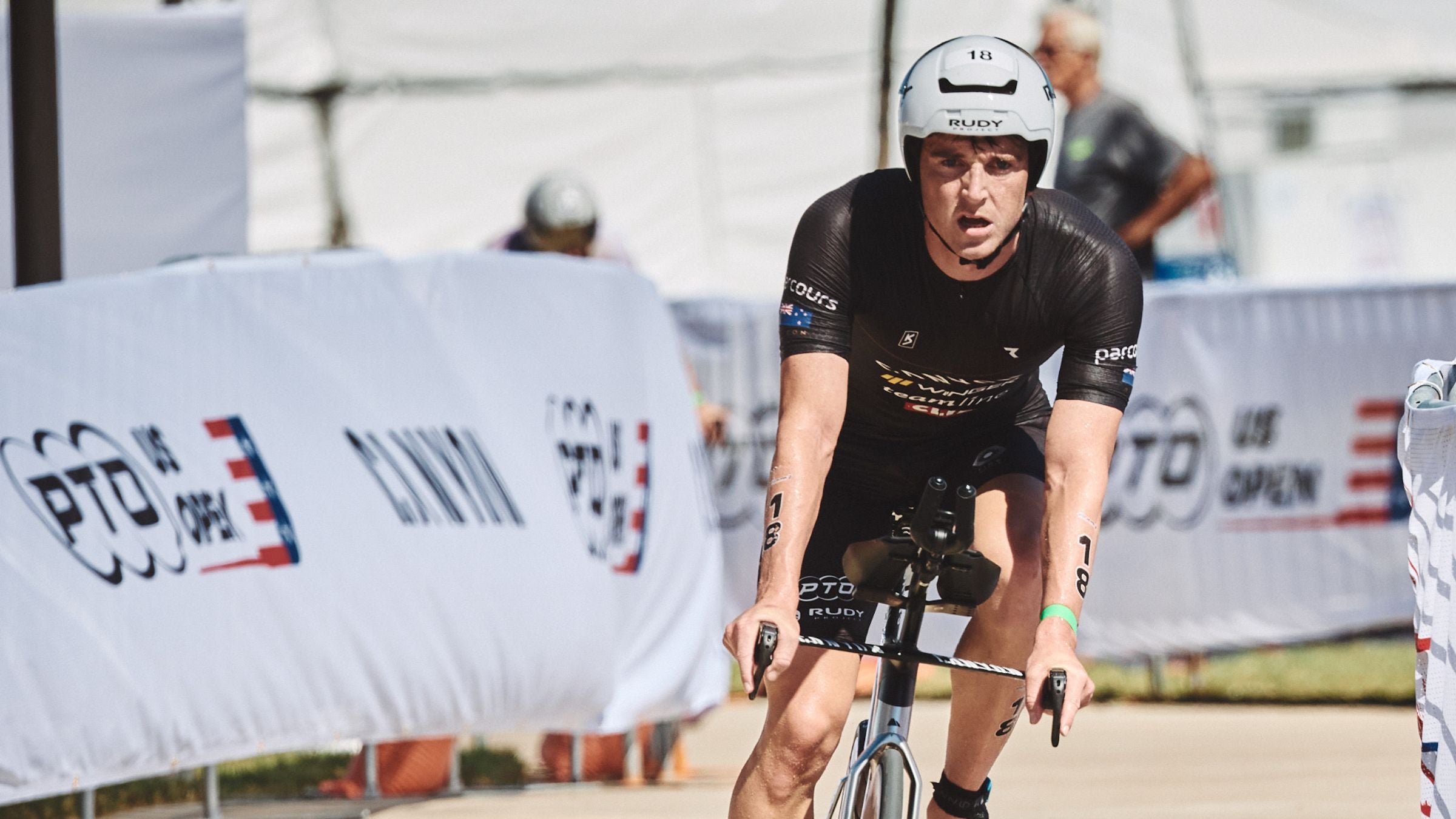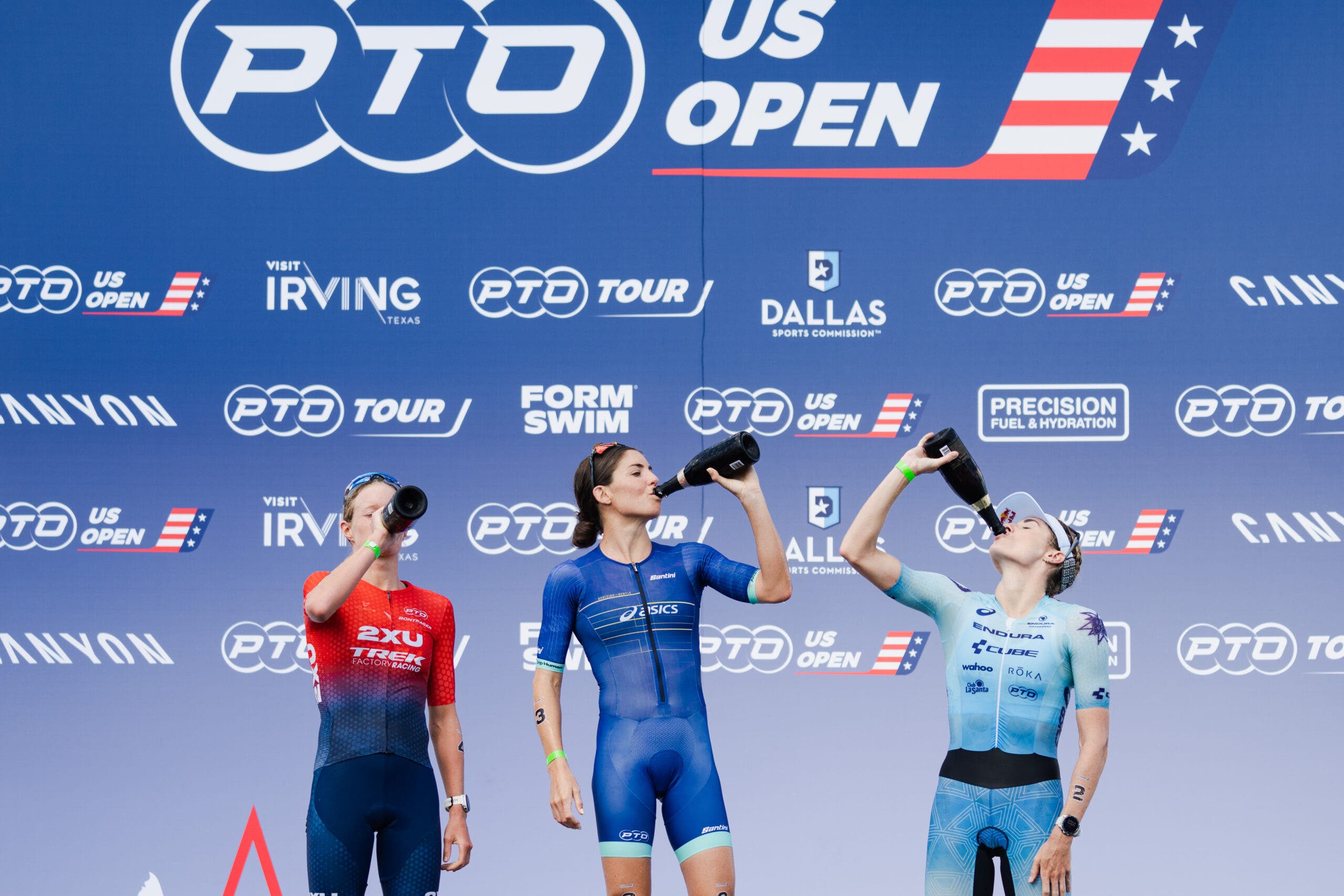Commentary: What's Going On With the PTO?

Professional triathlete Kyle Smith races at the 2022 PTO US Open. (Photo: Professional Triathletes Organization)
When the Professional Triathlon Union launched in 2015, its initial plan was to unite long-course athletes to improve their lot. It wasn’t the first time it had been tried. In fact, there already was a fledgling U.S-.based Professional Triathletes Association trying to do the same job, but as its founder, former U.S. pro Jarrod Shoemaker explains, “The problem was that athletes kept saying, ‘What’s in it for me?’”
The new PTU had a similar challenge. No real cash, and asking already hard-up professionals to fork out $600 for membership when the benefits were unclear was a hard sell. While race organizers like Challenge Family loved it, Ironman, who’d long charged its own license fee, was dismissive. The PTU’s status was further skewered when Jan Frodeno, who’d go on to become Ironman World Champion for the first time that year, delivered his take: “I’m honestly not a fan of unions in the first place, but forcing me to do anything generally results in me not wanting to do it.”
After initial excitement, the plan floundered, until an unlikely figure stepped in to help. Charles Adamo, a successful American businessman who’d been inspired by the sport when living in London, brought to the table an ever-positive mindset, a dogged persistence, and big dreams for a Ryder Cup-style team event to bring together the biggest names in triathlon.
From PTU to PTO

If Adamo was a catalyst, the game changer was Michael Moritz, a venture capitalist whose investments have included Google, Yahoo, and Outside Inc.[the parent company of Triathlete]. The now-Professional Triathletes Organization was very suddenly flush with cash. When news that Moritz was a lead investor broke in 2020, every triathlon journalist was scurrying to the Forbes Rich List to look up his worth (we’ll save you a trip to Google: it’s several billion dollars). Triathlon – or more specifically, its professional triathletes – had struck the jackpot.
Even as the pandemic hit, millions poured into and out of the PTO, with an early payout of the end-of-year season rankings and a $1 million event organized on the Daytona Speedway as soon as restrictions allowed. This was no longer the organization that was asking pros to stump up $600; instead, the PTO had come full circle. At one point, it was even offering to supplement and increase Ironman’s prize money for Ironman’s own events. Ironman declined.
Even Adamo’s brainchild, the will-it-won’t-it-happen Collins Cup, got the go-ahead. Samorin, Slovakia hosted the first edition in 2021, and coverage included a gigantic slow-motion camera that looked like it cost as much to hire for the day as the 1 million square meter Slovakian Olympic training base cost to build. (We exaggerate, but not by much.)
In 2022, the growth continued. The PTO received a Series B round of investment funding, with other big players joining Moritz. They also expanded their footprint beyond Daytona and Samorin: PTO Tour events launched in Edmonton and Dallas, the Collins Cup returned, and a pro-am event was held in Los Angeles. TV broadcast deals were signed, with the likes of Warner Bros. Discovery to bring triathlon to the armchair sports fan, rather than just devotees searching for a glitchy online stream.
RELATED: Was the Collins Cup A Success?
When is the bubble going to burst?
The constant refrain from detractors: “When is the bubble going to burst? When will investors’ patience for a return wear thin?” Surely, the cash flow would become a trickle. But PTO chief executive Sam Renouf remains steadfast that they are on – and even ahead of – schedule in the long game they’re playing. Yet while the investment keeps flowing, there have been changes for 2023 that for the first time make it look more like a transitional year than one of progression.
First, it’s been difficult for the PTO to get events off the ground. Only races in Ibiza, Milwaukee, and Singapore have been scheduled for the 2023 season, with no word of a return for the Collins Cup as of this writing. Adding to this, budgets are being reduced. Instead of offering a $1 million prize purse, Ibiza only paid out $600,000. This is still a princely sum in triathlon terms, but not so eye-watering as to negate pros considering alternatives – as several U.S.-based professionals did when they opted to race Ironman 70.3 St. George on the same day instead.
The production value of PTO’s live coverage has been scaled back too. Compared to before, we’re seeing fewer commentators, on-course motorcycles, no helicopter, and less ambition to deliver data and insights as we’ve seen with previous events.
Adamo has been replaced by Chris Kermode, the former president of the Association of Tennis Professionals, taking over as executive chairman. It’s coincided with the PTO narrowing its focus on the star performers, limiting the field size to 30 professional men and women, or 20 in the case of the event in Singapore, and the end of season payouts paying 50 deep rather than 100. Has the burn rate been too high? We don’t know yet. But it does look as if the PTO is still trying to find its formula for success.
RELATED: The Richest Pro Triathletes
Gambling on the pros

The PTO’s argument today is that by focusing on the biggest names, the sport will connect with the casual viewer, albeit taking it even further away from the original objective of the PTU to be a support body for all professional triathletes. Instead, the organization has become an events business, with a singular focus on making the broadcast the best it can possibly be. The age-group racing the PTO trialed and produced in Edmonton and Dallas last year looks to have been sidelined in favor of partnerships with World Triathlon (Ibiza) and USA Triathlon (Milwaukee), where amateur racing is already in place and the PTO pro race instead adds to the festival.
Is the organization gaining the traction it needs? Marketing director Tim Godfrey talks impressive figures of a TV and streaming audience of 23.1 million in 170 territories for last year’s events. The easy-to-follow season-long narrative works if you only consider PTO events in isolation and watch the build up and broadcast three or four times a year.
But the challenge is that this also largely ignores the calendar of established triathlon racing. While the 100K PTO distance can be compelling to watch, it’s pretty hard to explain to the casual fan why some top triathletes skipped it to take part in a world championship that was held largely on the same course on the very next day, as was the case in Ibiza with the Long Course World Championships. Triathlon is already confusing enough with all its disparate organizations and distances.
What about Ironman and Co.?
Whether this has much impact on the other organizations is arguable. World Triathlon rightly sees itself as an international governing body over an events organizer; its main goal to spread the message of the good ship Triathlon across the globe, with most roads leading to the Olympics. As it has done in the past with Super League, World Triathlon is content to partner with PTO.
Ironman, however, is going about its business as usual. If fewer pros turn up to its events because the PTO has a Tour race on, chief executive Andrew Messick won’t lose sleep. He’s long stated age-groupers are the core of the M-Dot business and feels no need to integrate with the PTO. Ironically, the PTO’s work of raising the profile of pros does much of Ironman’s marketing, with Ironman confident in the belief that they don’t have to increase their own prize purses markedly. They know for reasons of legacy, sponsor engagement (read: bonuses), and fan connection, almost every non-drafting pro triathlete still structures their season around the Ironman and 70.3 World Championships.
The flip side is that the PTO’s aim of bringing the best together to race – largely achieved at the PTO European Open in Ibiza this spring – becomes more challenging as we head into the busier summer period. Triathletes relish competition, but many relish being on the top step of an Ironman podium (and the previously mentioned sponsor bonuses that brings) even more. In that respect, there is more choice than ever. How do the PTO commentators explain to viewers that star performers have skipped the Asian Open in Singapore because they are preparing for the following week’s Ironman 70.3 World Championship in Finland? There are no easy answers.
RELATED: The 2023 (Must-Watch) Pro Triathlon Calendar
How will this play out?
Perhaps it doesn’t matter. The other, more base position – and one many pros quietly subscribe to – is that the PTO simply brings investment into the sport that wasn’t previously there. If you’re ranked highly enough to be invited to the PTO Tour you can decide on the merits at the time. If your ranking doesn’t get you in, go race a weaker pro field elsewhere instead. It might not be the professional athlete body as first envisaged, but compared to pre-PTO days, no one is any the poorer for it, either.
How will it play out? At present it’s unclear. While it might seem a way off, as long as the PTO draws a big enough TV audience for its events, then (financially, at least) it really doesn’t matter what happens in the rest of the sport. We could say the same about Super League Triathlon.
It’s not impossible. We’ve seen iterations of other sports become at least as successful – if not more so – than the traditional fare. Take the rapid-fire Twenty20 cricket versus the five-day test, for example, or how mixed martial arts brands like the UFC have grown up alongside boxing. The big question then becomes: Does triathlon have the same DNA to pull that off?
The romantic option is that all the organizers start working together, but there are too many conflicting business models and vested interests for that to be conceivable. The pessimistic outlook is that the money runs out, and the Moritz moonshot misses its mark. Let’s not dwell on that. The final, most intriguing option is that PTO purchases Ironman and incorporates both business models. The financial clout is there. Both are backed by private equity looking to make chunky profits. If the price is right, we just might see the money flow in a new and exciting way.